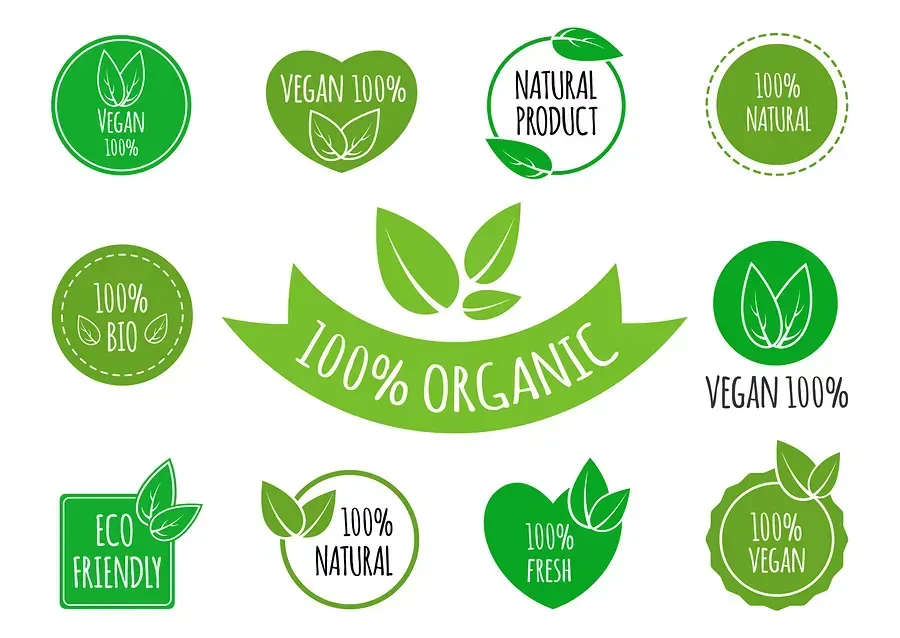Maintaining Optimal Freshness For Organic Produce
A Deep Dive into the Refrigeration Chain for Shipping Organic Produce

When it comes to shipping organic produce, maintaining optimal freshness is of utmost importance. The refrigeration chain plays a crucial role in ensuring that the produce reaches its destination in top condition. From the Soully Organic refrigerated warehouse to your produce's final destination, every step in the process requires careful temperature control and monitoring. In this article, we will take a deep dive into the refrigeration chain for shipping organic produce, exploring the best practices, challenges, and innovations in organic produce refrigeration. Whether you are a producer, distributor, or consumer, understanding the refrigeration chain is essential for ensuring the highest quality and freshness of organic produce.
2. The importance of maintaining freshness in the organic produce industry
Maintaining freshness is not just a luxury in the organic produce industry; it is an absolute necessity. As consumers increasingly prefer fresh and healthy options, the demand for organic produce is on the rise. This means that producers, distributors, and retailers must work together to ensure that the produce maintains its freshness from farm to table.
Freshness not only affects the taste and texture of organic produce but also its nutritional value. The longer produce sits around, the more it deteriorates, leading to a decrease in its nutritional content.
Furthermore, maintaining freshness is crucial for the reputation and success of organic produce businesses. Consumers associate organic produce with superior quality, and any compromise in freshness can damage that reputation. It is not enough to claim that your produce is organic; you must also prove that it is fresh.
In the next section, we will discuss the specific challenges and strategies involved in maintaining freshness throughout the refrigeration chain for shipping organic produce.
3. Understanding the refrigeration chain and its role in preserving freshness
Understanding the refrigeration chain is essential for preserving the freshness of organic produce during shipping. The refrigeration chain refers to the series of steps and processes that ensure optimal storage and temperature control from the moment the produce is harvested to its arrival at the destination.
One of the primary challenges in the refrigeration chain is maintaining consistent temperature control. Deviations in temperature can accelerate the spoilage of organic produce, leading to reduced quality and freshness. To overcome this challenge, it is important to invest in high-quality refrigeration equipment, such as temperature-controlled containers or trucks, which can maintain the desired temperature throughout transit.
Another crucial aspect of the refrigeration chain is proper handling and packaging. Organic produce should be carefully handled to avoid bruising and damage, which can expedite spoilage. Additionally, packaging plays a vital role in protecting the produce from external factors that may compromise its freshness, such as exposure to air or moisture.
In the following section, we will delve into the specific strategies and best practices for maintaining optimal freshness within the refrigeration chain for shipping organic produce.
4. The challenges and potential risks of the refrigeration chain
While the refrigeration chain plays a crucial role in preserving the freshness of organic produce during shipping, it also poses various challenges and potential risks. Understanding these challenges is essential for implementing effective strategies and mitigating any potential risks.
One of the main challenges in the refrigeration chain is maintaining consistent temperature control throughout the entire shipping process. Temperature fluctuations can occur due to external factors such as varying weather conditions, improper handling, or equipment malfunctions. Any deviation from the desired temperature range can lead to accelerated spoilage and a decrease in the overall quality of the organic produce.
Another challenge is ensuring proper airflow and ventilation within the refrigeration units. Poor airflow can create pockets of warm air, which can result in localized spoilage. It is crucial to arrange the produce in such a way that allows for optimal airflow and ventilation throughout the shipment.
Insufficient insulation is yet another risk to be aware of in the refrigeration chain. Inadequate insulation can lead to temperature leakage and energy loss, compromising the freshness of the organic produce. Regular inspections and maintenance of refrigeration equipment are necessary to ensure proper insulation and prevent any potential risks.
Furthermore, the potential risks of the refrigeration chain include delays in shipping or unexpected transit interruptions. These unforeseen circumstances can pose a risk to the freshness of the produce, as longer shipping durations or improper storage conditions can increase the likelihood of spoilage.
In the next section, we will explore the strategies and best practices to overcome these challenges and mitigate the potential risks involved in the refrigeration chain for shipping organic produce.
5. Best practices for ensuring optimal freshness throughout the shipping process
Now that we have identified the challenges and potential risks involved in the refrigeration chain for shipping organic produce, it is crucial to implement effective strategies and best practices to maintain optimal freshness.
1. Temperature monitoring and control: Regularly monitor and maintain consistent temperatures throughout the entire shipping process. Utilize temperature monitoring devices and alarms to quickly identify any fluctuations and take immediate corrective actions.
2. Proper packing and arrangement: Ensure that the organic produce is packed and arranged in a way that allows for optimal airflow and ventilation within the refrigeration units. This will help prevent the formation of warm air pockets and localized spoilage. Additionally, consider using insulated packaging materials to further protect the produce.
3. Quality inspection: Conduct regular inspections of the refrigeration equipment and containers to ensure proper insulation and functionality. Address any issues promptly to avoid temperature leakage and energy loss.
4. Efficient logistics management: Work closely with logistics partners to minimize delays and transit interruptions. Implement contingency plans to handle unforeseen circumstances effectively, such as rerouting shipments or providing alternative storage options.
5. Employee training and awareness: Train employees involved in the refrigeration chain on best practices for handling and transporting organic produce. Make sure they are aware of the importance of maintaining optimal temperature control and proper ventilation.
By adhering to these best practices, you can significantly reduce the risks and challenges associated with the refrigeration chain for shipping organic produce. This will ultimately help ensure that your organic produce arrives at its destination with maximum freshness and quality intact. Stay tuned for the next section, where we’ll dive into the role of technology in optimizing the refrigeration chain for organic produce shipping.
6. Monitoring and quality control in the refrigeration chain
In order to maintain optimal freshness and quality of organic produce during shipping, it is essential to have a robust system for monitoring and quality control in the refrigeration chain. Here are some key aspects to consider:
a) Temperature monitoring: Implement a reliable temperature monitoring system that provides real-time data on temperature conditions inside the refrigeration units. This will help identify any deviations from the desired temperature range and allow for immediate corrective actions.
b) Quality inspections: Conduct regular quality inspections throughout the entire refrigeration chain. This includes checking the produce for any signs of spoilage, damage, or pests. Inspections should also be done on the packaging materials to ensure they are intact and free from any contaminants.
c) Documentation and record-keeping: Maintain accurate documentation of all temperature records, inspections, and any corrective actions taken. This will help track the journey of the organic produce and identify any potential issues that may arise during the shipping process.
d) Supplier communication: Stay in regular communication with suppliers to ensure they are adhering to proper handling and refrigeration practices before the produce is shipped. This can help prevent any quality issues from arising in the first place.
By implementing a comprehensive monitoring and quality control system, you can mitigate risks and proactively address any potential problems in the refrigeration chain. In the next section, we will explore the role of technology in optimizing the refrigeration chain for shipping organic produce. Stay tuned for more informative insights!
7. The role of technology in improving and optimizing the refrigeration chain
In today's technologically advanced world, incorporating the right tools and technologies can significantly improve the efficiency and effectiveness of the refrigeration chain for shipping organic produce. Let's delve into some of the key ways technology can help optimize this process:
a) Remote monitoring: Utilizing remote monitoring systems allows for real-time tracking of temperature and humidity levels inside refrigeration units. This not only provides instant alerts in case of any abnormalities but also enables proactive actions to be taken promptly, ensuring the produce remains fresh and of the highest quality.
b) Automated temperature control: Implementing automated temperature control systems can help maintain a consistent and optimal temperature throughout the shipping process. This reduces the risk of temperature fluctuations that can compromise the freshness and shelf life of organic produce.
c) Data analytics: Gathering and analyzing data from the refrigeration chain can provide valuable insights into trends, patterns, and potential areas for improvement. By leveraging data analytics, shipping companies can identify bottlenecks or inefficiencies in the process and make data-driven decisions to enhance overall performance.
d) Blockchain technology: Adopting blockchain technology can revolutionize transparency and traceability in the supply chain. By recording every step of the journey on an immutable ledger, stakeholders can easily track the origin, handling practices, and temperature conditions of the organic produce, ensuring accountability and reducing the risk of fraud or mishandling.
By embracing these technological advancements, shipping companies and suppliers can enhance their ability to maintain optimal freshness and quality throughout the refrigeration chain. In the following section, we will explore some case studies showcasing successful implementation of technology in the shipping of organic produce. Stay tuned for inspiring examples of industry best practices!
8. Conclusion: The key to success in shipping organic produce lies in a well-maintained refrigeration chain.
Conclusion: The key to success in shipping organic produce lies in a well-maintained refrigeration chain.
So, as you can see there are various ways technology can optimize the refrigeration chain for shipping organic produce. Remote monitoring systems enable real-time tracking of temperature and humidity levels, ensuring prompt actions can be taken if abnormalities occur. Automated temperature control systems maintain a consistent and optimal temperature, reducing the risk of compromising the produce's freshness and shelf life. Data analytics provide valuable insights to identify inefficiencies and make data-driven decisions for improvement. Blockchain technology revolutionizes transparency and traceability, ensuring accountability throughout the supply chain.
By embracing these advancements, shipping companies and suppliers can enhance their ability to maintain optimal freshness and quality. In the next section, we will explore inspiring case studies showcasing successful implementation of technology in the shipping of organic produce. Stay tuned for more industry best practices!
Soully Organic
Heath & Lejeune
1417 South Eastman Avenue
Commerce, CA 90023
Our warehouse is conveniently located close to Eastbound, Northbound and Southbound freeways, and is an easy and efficient location to unload, reload and quickly get back on the road!


